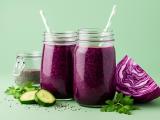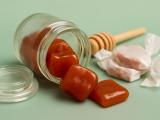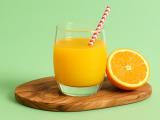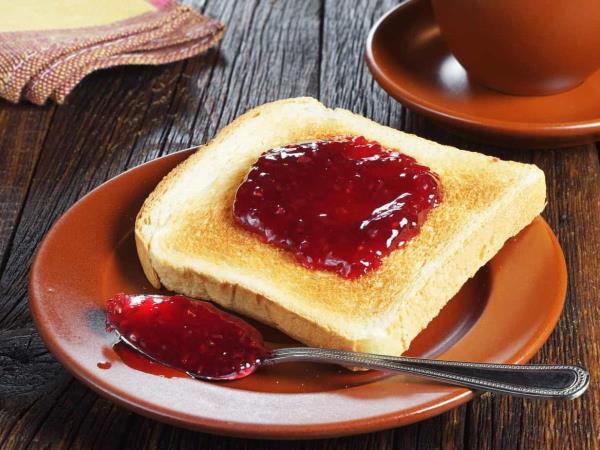- Tea and milk – opposites that do not attract
You have probably ordered tea with milk at a caf{-15447} before. The English have been doing this for centuries, and many think: "If the whole United Kingdom does it, it can't be wrong." But science says otherwise.
Teas, especially black and green teas, are naturally full of antioxidants - substances that catch harmful molecules in the body called free radicals. These molecules form when we are stressed, breathe polluted air, or have an unhealthy diet. The antioxidants in tea help reduce inflammation in the body and strengthen our immune system.
But beware: if you add milk to tea, whether it's cow's milk or a plant-based substitute like soy or almond milk, something unusual happens. The proteins from milk bind to the antioxidants and prevent our bodies from being able to use them. This was confirmed by scientists at the German university Charite, where they found that adding milk significantly reduces the healing effect of flavonoids - a group of antioxidants found most in tea.
Additionally, tea contains caffeine, which is harmless when consumed in moderation, but it interferes with the absorption of calcium that would otherwise be obtained from milk. So - neither the milk nor the tea retains its properties. It's a double loss.
If you want to enhance your tea, we recommend squeezing a drop of lemon - not only does it improve the flavor, but it also increases the absorption of some nutrients from the tea, as vitamin C helps the body utilize more antioxidants.
Fun fact: According to a study by the British Tea Advisory Panel, 42% of the British population drinks tea with milk. But research shows that these people derive the least health benefits from tea. - Bread and jam – a sugary bomb for breakfast
A breakfast that often seems harmless - a piece of white bread and a spoonful of homemade jam - can actually be a recipe for afternoon fatigue, hunger, and long-term blood sugar issues.
Let's start with the bread. Most people still opt for white bread, which has a very high glycemic index - meaning it converts quickly into blood sugar. If you add jam, which is practically pure sugar (on average, 100 grams of jam contains 65 to 70 grams of sugar!), you're sending a large amount of glucose into your body at once.
This causes a rapid spike in blood sugar, the pancreas has to rapidly produce insulin to get this sugar into cells. But because there is too much sugar, the body cannot use all that energy and stores it as fat.
But the story doesn't end there. When insulin does its job, blood sugar quickly drops, causing that familiar energy crash where you become tired, hungry, and irritable. Long term, this stress on the pancreas can also lead to insulin resistance, a precursor to type 2 diabetes.
You may be thinking - should I swap white bread for whole grain? Even this solution is not perfect. A study published in the prestigious journal The American Journal of Clinical Nutrition showed that whole grain bread also has a relatively high glycemic index (between 65 and 70), slightly lower than white bread.
What to do then? The answer is not in sweet spreads, but in healthy fats. If you spread homemade butter on bread, which contains vitamins A, D, and E along with healthy fats, the release of blood sugar slows down, resulting in more stable energy. Additionally, in recent years, multiple studies (e.g., the 2019 Harvard study) confirm that moderate consumption of saturated fats is not associated with cardiovascular diseases, as long believed.
Did you know that the average jam contains 3 to 5 sugar cubes per tablespoon? That's almost half of an adult's daily recommended added sugar intake. - Fat-free salad - vegetables that leave nothing behind
In the desire for a slender figure, many decide to eat salad plain or with some pre-prepared fat-free dressing. At first glance, this seems reasonable - less fat, fewer calories. But again, a paradox arises: without fats, we cannot utilize the nutrients from vegetables!
Green lettuces, carrots, bell peppers, tomatoes, and other colorful vegetables contain carotenoids, vitamin K, vitamin E, and other beneficial substances that are fat-soluble. This means that our body can only absorb them if we consume them with some fat.
A study from 2004, published in the American Journal of Clinical Nutrition, clearly showed that carotenoids are virtually not absorbed if we eat salad without fat. However, when participants consumed salad with a spoon of olive oil, the absorption of these substances increased by up to 15 times!
This means that if you want to benefit from the salad, make sure to add a spoon or two of good oil - olive, pumpkin, hemp, flaxseed - each has its advantages. For example, olive oil contains oleic acid, which reduces inflammation and strengthens the heart. Pumpkin oil is full of zinc and omega-6 fatty acids, while hemp oil has the ideal ratio of omega-3 to omega-6.
This way, you'll not only improve the taste but also enable your body to utilize all the good from vegetables. And remember - natural fats do not make us gain weight if consumed moderately. Excess sugar and processed foods make us gain weight.
Health is not in diets but in smart combinations
Our body is like an old but well-oiled clock - if you pour dust and sand into it, it will eventually break down. But if you maintain it properly, it will tick for many years. The same goes for our body. Food is not the enemy, but medicine - only if we know how to use it correctly.
Therefore, next time you prepare tea, forget about milk. Spread butter instead of jam on the bread. And for salad - dress it with a spoon of good homemade oil, not with artificial fat-free dressings.
If you are interested in learning more about which combinations are truly good for the body and soul, we invite you to regularly follow the portal Vemkajjem.si. Here you will find homemade solutions supported by research, but written in a language that everyone understands.









 Would you like to be informed about news on the website?
Would you like to be informed about news on the website?

